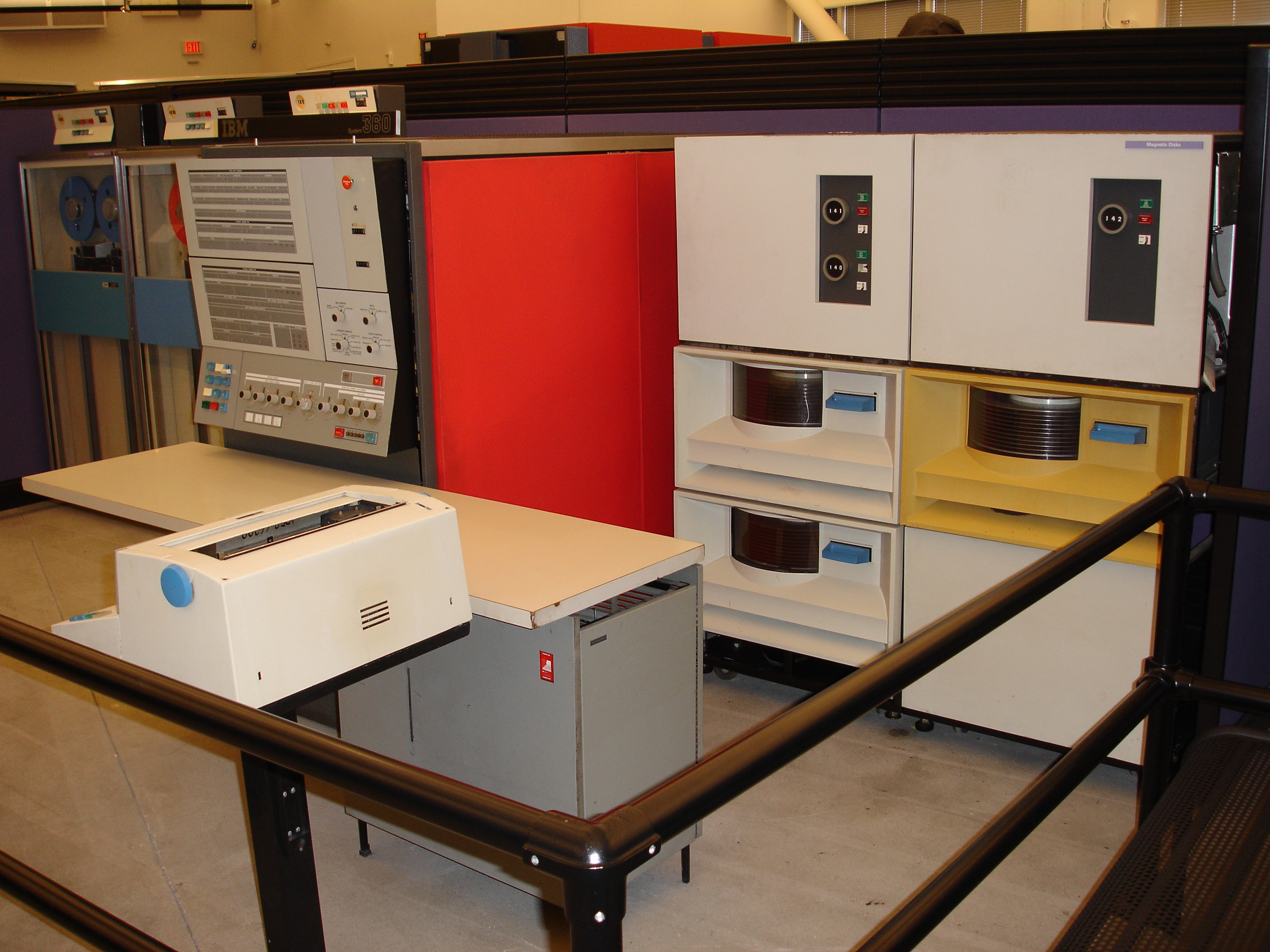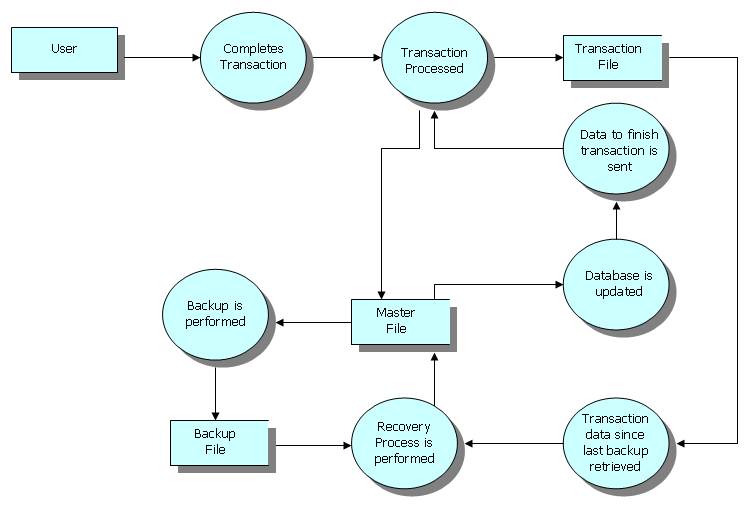|
IBM Airline Control Program
IBM Airline Control Program, or ACP, is a discontinued operating system developed by IBM beginning about 1965. In contrast to previous airline transaction processing systems, the most notable aspect of ACP is that it was designed to run on most models of the IBM System/360 mainframe computer family. This departed from the earlier model in which each airline had a different, machine-specific transaction system. Overview Development began with ''SABRE (Semi-Automatic Business Research Environment)'', ''Deltamatic'', and ''PANAMAC''. From these, the ''Programmed Airline Reservations System (PARS)'' was developed. In 1969 the control program, ''ACP'', was separated from PARS. PARS kept the functions for processing airline reservations and related data. In December 1979, ACP became known as ACP/TPF and then just TPF (Transaction Processing Facility). The transaction operating system became more widely implemented by businesses other than the major airlines, such as online credit car ... [...More Info...] [...Related Items...] OR: [Wikipedia] [Google] [Baidu] |
System/360
The IBM System/360 (S/360) is a family of mainframe computer systems announced by IBM on April 7, 1964, and delivered between 1965 and 1978. System/360 was the first family of computers designed to cover both commercial and scientific applications and a complete range of applications from small to large. The design distinguished between computer architecture, architecture and implementation, allowing IBM to release a suite of compatible designs at different prices. All but the only partially compatible IBM System/360 Model 44, Model 44 and the most expensive systems use microcode to implement the instruction set, featuring 8-bit computing, 8-bit byte addressing and fixed-point binary, fixed-point decimal and IBM hexadecimal floating-point, hexadecimal floating-point arithmetic, floating-point calculations. The System/360 family introduced IBM's Solid Logic Technology (SLT), which packed more transistors onto a circuit card, allowing more powerful but smaller computers. System/36 ... [...More Info...] [...Related Items...] OR: [Wikipedia] [Google] [Baidu] |
IBM 3340
IBM manufactured magnetic disk storage devices from 1956 to 2003, when it sold its hard disk drive business to Hitachi. Both the hard disk drive (HDD) and floppy disk drive (FDD) were invented by IBM and as such IBM's employees were responsible for many of the innovations in these products and their technologies. The basic mechanical arrangement of hard disk drives has not changed since the IBM 1301. Disk drive performance and characteristics are measured by the same standards now as they were in the 1950s. Few products in history have enjoyed such spectacular declines in cost and physical size along with equally dramatic improvements in capacity and performance. IBM manufactured 8-inch floppy disk drives from 1969 until the mid-1980s, but did not become a significant manufacturer of smaller-sized, 5.25- or 3.5-inch floppy disk drives (the dimension refers to the diameter of the floppy disk, not the size of the drive). IBM always offered its magnetic disk drives for sale but did no ... [...More Info...] [...Related Items...] OR: [Wikipedia] [Google] [Baidu] |
Timeline Of Operating Systems
This article presents a timeline of events in the history of computer operating systems from 1951 to the current day. For a narrative explaining the overall developments, see the History of operating systems. 1950s * 1951 ** LEO I 'Lyons Electronic Office' was the commercial development of EDSAC computing platform, supported by British firm J. Lyons and Co. * 1953 ** DYSEAC - an early machine capable of distributing computing * 1955 ** General Motors Operating System made for IBM 701 ** MIT's Tape Director operating system made for UNIVAC 1103 * 1956 ** GM-NAA I/O for IBM 704, based on General Motors Operating System * 1957 ** Atlas Supervisor (Manchester University) (''Atlas computer project start'') ** BESYS (Bell Labs), for IBM 704, later IBM 7090 and IBM 7094 * 1958 ** University of Michigan Executive System (UMES), for IBM 704, 709, and 7090 * 1959 ** SHARE Operating System (SOS), based on GM-NAA I/O 1960s * 1960 ** IBSYS (IBM for its 7090 and 7094) * 1961 ** ... [...More Info...] [...Related Items...] OR: [Wikipedia] [Google] [Baidu] |
ALCS Transaction Monitor
{{Short description, IBM mainframe application server ALCS, which stands for Airline Control System, is an application server that provides industrial-strength, online transaction management for mission-critical applications. ALCS is a transaction processing monitor for the IBM System/360, System/370, System/390, and IBM Z mainframes. It is a variant of TPF specially designed to provide all the benefits of TPF (very high speed, high volume, and high availability in transaction processing) but with the advantages such as easier integration into the data center offered by running on a standard IBM operating system platform. Like TPF, it is primarily used in the airline, hotel, and banking industries. Whereas TPF runs as a stand-alone OS, ALCS is designed to run as an application on top of MVS/ OS/390/z/OS. However, the API it provides to applications is very similar to that on TPF, so applications written for TPF can run on ALCS with minimal modifications: typically fewer modific ... [...More Info...] [...Related Items...] OR: [Wikipedia] [Google] [Baidu] |
IBM Single Virtual Storage (SVS)
Single Virtual Storage (SVS) refers to Release 1 of Operating System/Virtual Storage 2 (OS/VS2); it is the successor system to the MVT option of Operating System/360. OS/VS2 (SVS) was a stopgap measure pending the availability of MVS, although IBM provided support and enhancements to SVS long after shipping MVS. SVS provides a ''single'' 16MiB address space which is shared by all tasks in the system, regardless of the size of physical memory. Differences from MVT OS/360 used the Interval Timer feature for providing time of day and for triggering time-dependent events. The support for S/370 made limited use of new timing facilities, but retained a dependency on the Interval Timer. SVS uses the TOD Clock, Clock Comparator and CPU Timer exclusively. OS/360 loads error recovery and transient SVC routines from SYS1.SVCLIB into small transient areas. SVS loads these routine from SYS1.LPALIB into the Pageable Link Pack Area (PLPA) during an IPL with the Create LPA (CLPA) option; the ... [...More Info...] [...Related Items...] OR: [Wikipedia] [Google] [Baidu] |
OS/VS1
Operating System/Virtual Storage 1, or OS/VS1, is a discontinued IBM mainframe computer operating system designed to be run on IBM System/370 hardware. It was the successor to the Multiprogramming with a Fixed number of Tasks (MFT) option of System/360's operating system OS/360. OS/VS1, in comparison to its predecessor, supported virtual memory (then called ''virtual storage''). OS/VS1 was generally available during the 1970s and 1980s, and it is no longer supported by IBM. Description OS/VS1 was OS/360 MFT II with a single virtual address space; by comparison, OS/VS2 SVS was OS/360 MVT with a single virtual address space. OS/VS1 was often installed on mid-range IBM mainframe systems, such as the System/370 Model 145 and, later, the System/370 Model 148. OS/VS1 was intended to manage a medium-sized work load (for the 1970s) consisting only of batch processing applications, running within a fixed number of operating system partitions via the batch job management system Job En ... [...More Info...] [...Related Items...] OR: [Wikipedia] [Google] [Baidu] |
Hypervisor
A hypervisor, also known as a virtual machine monitor (VMM) or virtualizer, is a type of computer software, firmware or hardware that creates and runs virtual machines. A computer on which a hypervisor runs one or more virtual machines is called a ''host machine'', and each virtual machine is called a ''guest machine''. The hypervisor presents the guest operating systems with a virtual operating platform and manages the execution of the guest operating systems. Unlike an emulator, the guest executes most instructions on the native hardware. Multiple instances of a variety of operating systems may share the virtualized hardware resources: for example, Linux, Windows, and macOS instances can all run on a single physical x86 machine. This contrasts with operating-system–level virtualization, where all instances (usually called ''containers'') must share a single kernel, though the guest operating systems can differ in user space, such as different Linux distributions with the sam ... [...More Info...] [...Related Items...] OR: [Wikipedia] [Google] [Baidu] |
Magnetic Tape Data Storage
Magnetic-tape data storage is a system for storing digital information on magnetic tape using digital recording. Tape was an important medium for primary data storage in early computers, typically using large open reels of 7-track, later 9-track tape. Modern magnetic tape is most commonly packaged in cartridges and cassettes, such as the widely supported Linear Tape-Open (LTO) and IBM 3592 series. The device that performs the writing or reading of data is called a tape drive. Autoloaders and tape libraries are often used to automate cartridge handling and exchange. Compatibility was important to enable transferring data. Tape data storage is now used more for system backup, data archive and data exchange. The low cost of tape has kept it viable for long-term storage and archive. Open reels Initially, magnetic tape for data storage was wound on reels. This standard for large computer systems persisted through the late 1980s, with steadily increasing capacity d ... [...More Info...] [...Related Items...] OR: [Wikipedia] [Google] [Baidu] |
Transaction Processing Facility
Transaction Processing Facility (TPF) is an IBM real-time operating system for mainframe computers descended from the IBM System/360 family, including zSeries and System z9. TPF delivers fast, high-volume, high-throughput transaction processing, handling large, continuous loads of essentially simple transactions across large, geographically dispersed networks. While there are other industrial-strength transaction processing systems, notably IBM's own CICS and IMS, TPF's specialty is extreme volume, large numbers of concurrent users, and very fast response times. For example, it handles VISA credit card transaction processing during the peak holiday shopping season. The TPF passenger reservation application PARS, or its international version IPARS, is used by many airlines. ''PARS'' is an ''application program''; TPF is an operating system. One of TPF's major optional components is a high performance, specialized database facility called ''TPF Database Facility'' (TPFDF). A ... [...More Info...] [...Related Items...] OR: [Wikipedia] [Google] [Baidu] |
Sabre (travel Reservation System)
Sabre Global Distribution System is a travel reservation system owned by Sabre Corporation, which allows travel agents and companies to search, price, book, and ticket travel services provided by airlines, hotels, car rental companies, rail providers and tour operators. Originally developed by American Airlines under CEO C.R. Smith with the assistance of IBM in 1960, the booking service became available for use by external travel agents in 1976 and became independent of the airline in March 2000. Overview The system's parent company is organized into three business units: *Sabre Travel Network: global distribution system *Sabre Airline Solutions: airline technology *Sabre Hospitality Solutions: hotel technology solutions Sabre is headquartered in Southlake, Texas, and has many employees in various locations around the world. History The name of the computer reservation system is an abbreviation for "Semi-automated Business Research Environment", and was originally styled in ... [...More Info...] [...Related Items...] OR: [Wikipedia] [Google] [Baidu] |
Transaction Processing System
A transaction processing system (TPS) is a computer software, software system, or software/computer hardware, hardware combination, that supports transaction processing. History The first transaction processing system was Sabre (computer system), SABRE, made by IBM for American Airlines, which became operational in 1964. Designed to process up to 83,000 transactions a day, the system ran on two IBM 7090 computers. SABRE was migrated to IBM System/360 computers in 1972, and became an IBM product first as ''IBM Airline Control Program, Airline control Program (ACP)'' and later as ''Transaction Processing Facility, Transaction Processing Facility (TPF)''. In addition to airlines, TPF is used by large banks, credit card companies, and hotel chains. The Hewlett Packard Enterprise NonStop (server computers), NonStop system (formerly Tandem Computers, Tandem NonStop) is a hardware and software system designed for ''Online Transaction Processing (OLTP)'' introduced in 1976. The system pr ... [...More Info...] [...Related Items...] OR: [Wikipedia] [Google] [Baidu] |


